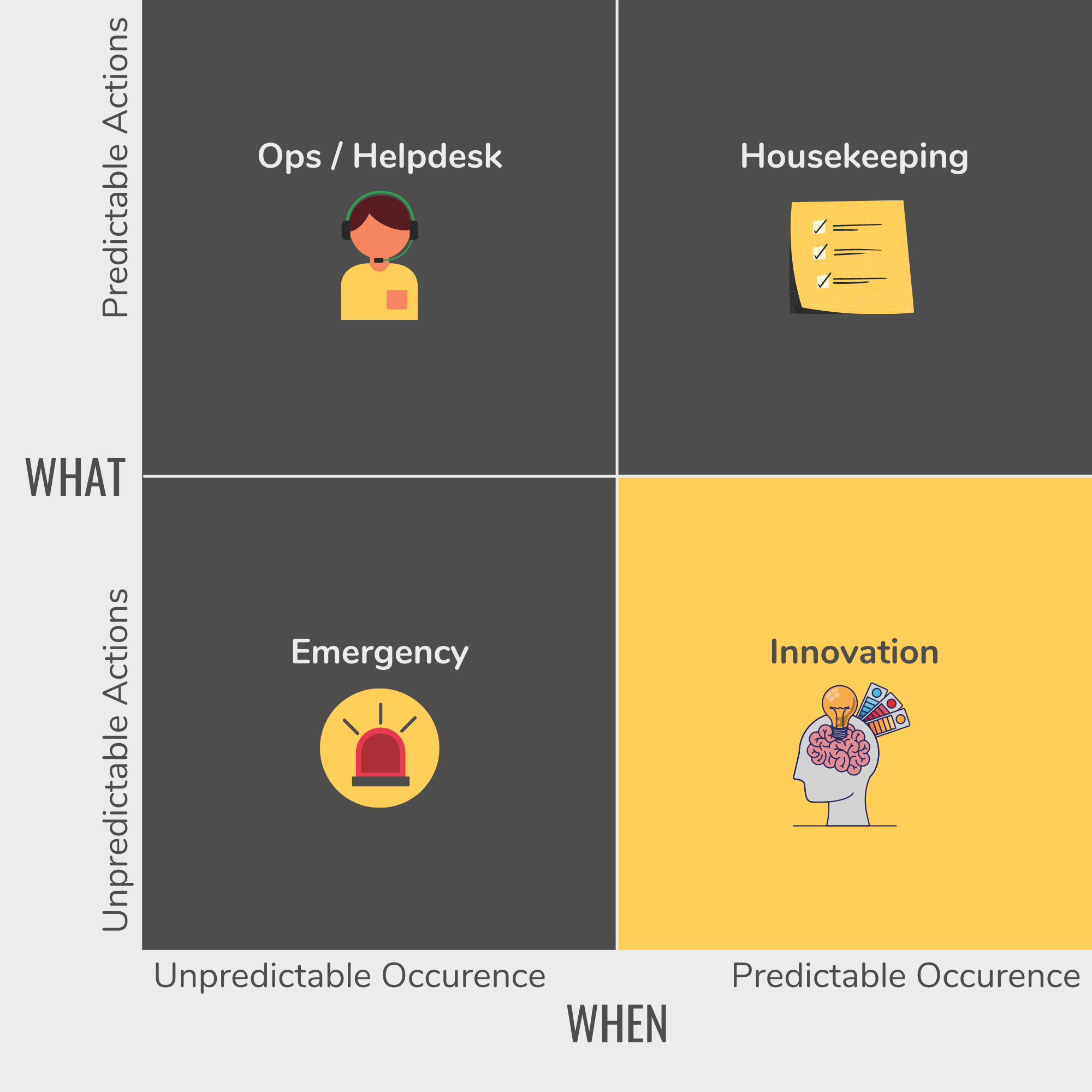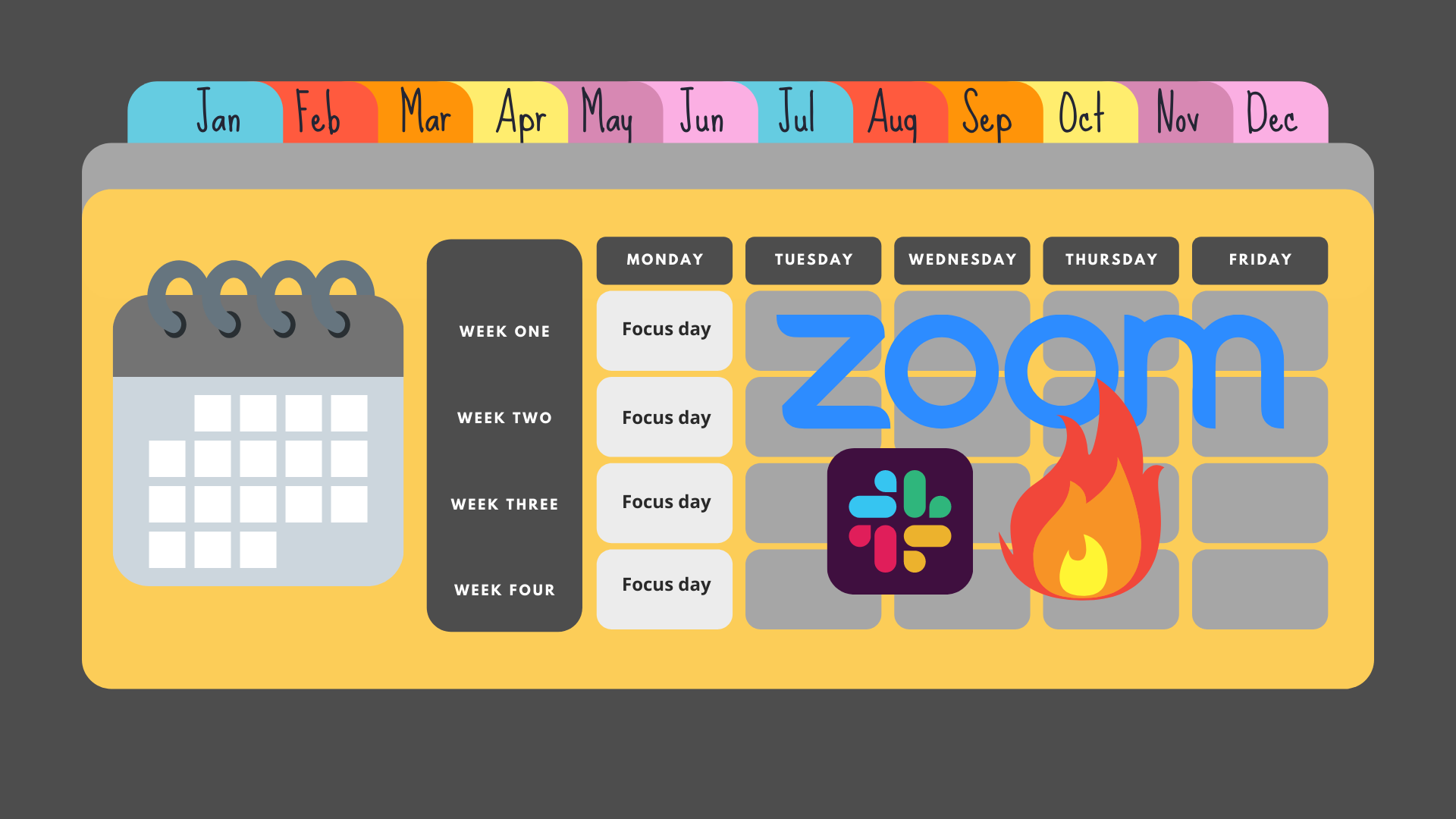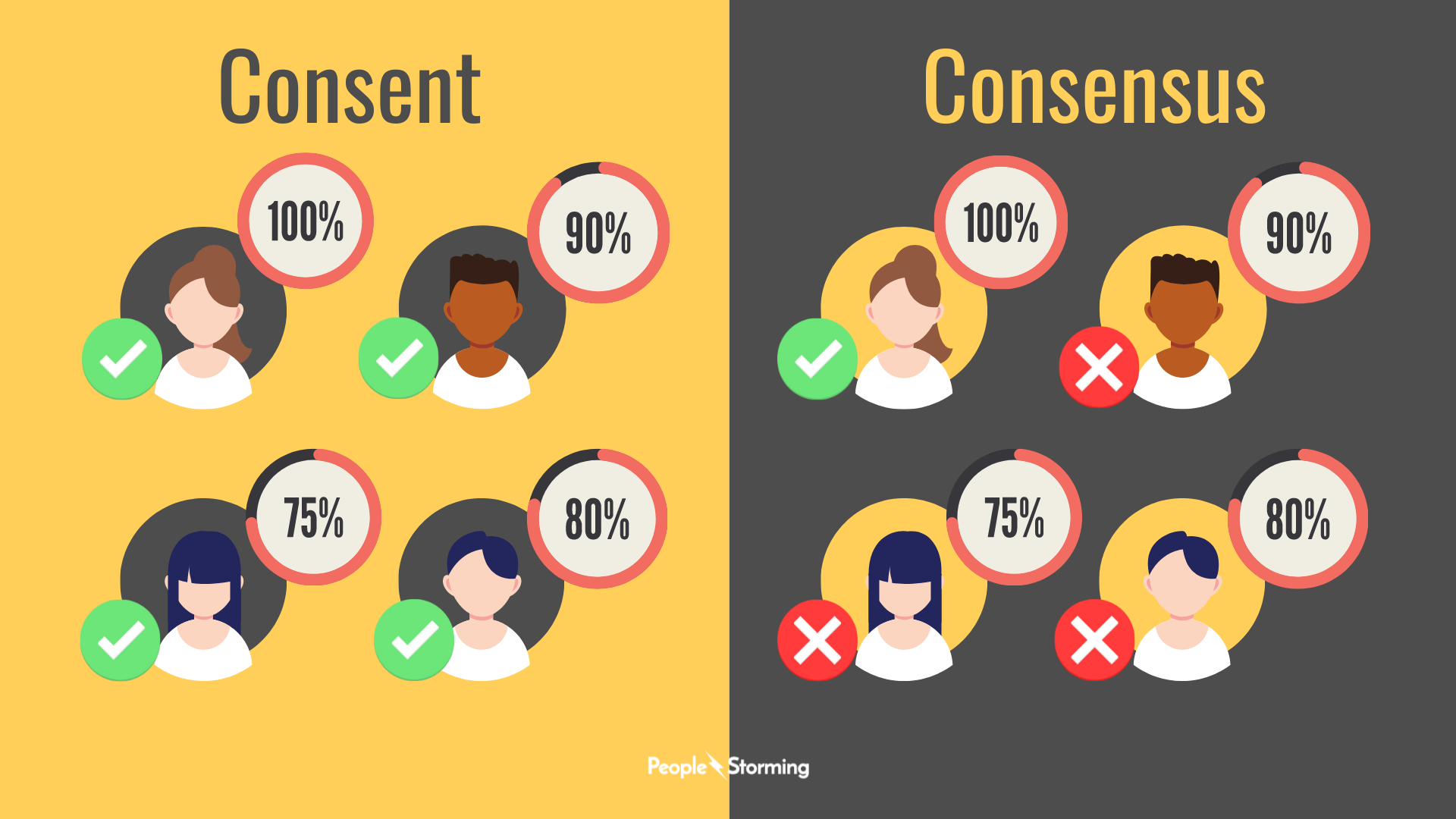Beyond The Busywork
Unlocking Your Team's Problem-Solving Potential

Do you want to spend more of your time making things that solve problems for people? If so, you're not alone. With the rising popularity of product management thinking, even traditionally quite operational roles like HR, finance and security are coming to understand that all of the deep value lies in thinking like product developers.
In recent coaching sessions, a number of our clients have talked passionately about wanting to get clear of the operational stuff and do something meaningfully different to deliver things like better employee experiences, easier-to-use tools and safer work environments.
Consider The PIP Model
Step 1 in this journey is to understand the mixture of work a team owns and to model that work in a way that makes it easier to make room for the product stuff. We call our model for this PIP (the PeopleStorming Innovation Predictability model)...

This map emphasizes how important predictability is to the kinds of work your team ends up doing. It is based on two questions...
- How much control do you have over when you'll (have to) do something?
- When you get to that thing, how well can you predict what steps you'll (have to) take?
When teams say they want (and need) to do more problem / product oriented work, they're saying that they want to spend more time in the bottom right hand corner of the grid. In that corner, they'll carve out time in advance (predictably) to do work but won't know exactly how that work will unfold (since they'll be creating new things).
By contrast, to take one particular domain, HR teams are often swamped with the stuff in other quadrants of the grid...
- Payroll has to be run every two weeks (housekeeping).
- If someone suddenly goes on family leave, certain processes have to be completed within a certain number of days (ops / helpdesk).
- A global pandemic suddenly shifts a bunch of norms around workplace health and safety and HR people have to scramble to respond to the novel situation (emergency).
In fact, the sheer volume of 'stuff we have to do' in the HR world is the likely culprit for why that discipline has been miscast as a purely operational one for so long. The recent interest in 'stuff we could do' in HR (i.e. the bottom right hand corner of the grid) is a long-overdue reaction to this problem.
What Can We Do?
Through our coaching work, we've found that the single, biggest problem leaders face in trying to get more product-oriented work done is that it's difficult to give that work enough space and time to flourish.
Overcoming that problem involves two steps...
- Ensuring that the organization understands the value that's being wasted by not spending more time in the innovation quadrant.
- Creating robust processes and resourcing around the other quadrants to liberate time for product-oriented work.
Protecting Vs Creating Value
Three of the quadrants are fundamentally about protecting existing value in some way...
- Housekeeping is the pre-emptive work that keeps things running smoothly. A good housekeeping activity is one where the cost of doing it regularly is usually far lower than the cost of dealing with the problems that would emerge if it weren't done. In fact, a lack of housekeeping drives a team into the emergency quadrant because they've missed the chance to use predictable processes to keep a lid on things. Think about what would happen if your company just forgot to run payroll this month.
- Ops / helpdesk work is similar. Effective operational organizations constantly seek ways to standardize their approach to providing particular services so that training and automation become easier. Having an ops focus is about asking the question "how can we squeeze our costs down to zero while still delivering predictable, sufficient value?". A big part of this optimization comes from being strict about scope. Picture what would happen if Starbucks allowed you to walk into one of their stores and order an Elephant instead of a coffee. Think about what that breadth of service would do to their ability to tune and optimize their operations.
- The emergency quadrant is the least efficient quadrant to be in. This is because it combines improvisation with protecting value. In other words, under most circumstances, the best you can hope for as you scramble to respond is that no existing value was destroyed.
It is from these ideas that we derive the argument for investing in the innovation quadrant. If you aren't in the business of creating new value for your customers (whoever they are), someone else will and they'll make you irrelevant.
Carving Out Space
This model can also be useful in planning how space will be carved out for innovation. In fact, we've found that there is a very common progression that teams follow as they try to 'clear the decks' in this way...
- Carefully retro each emergency until you spot useful patterns in the actions people took. Those common patterns become repeatable procedures and that shifts a bunch of emergency work into the ops / helpdesk quadrant.
- Examine ops / helpdesk work to see which activities could be made self-service or automated with the right tooling. Either buy that tooling or add it to the team's product backlog. This transition usually replaces reactive ops work with proactive work to keep the self-service / automated systems running smoothly. In other words, ops / helpdesk work is shifted into the housekeeping quadrant.
- Periodically terminate any housekeeping work that supports processes / systems that are rarely used.
- Staff whatever work remains so that the team members who are handling emergencies, ops / helpdesk and housekeeping work are well equipped, trained and have a little spare capacity to ensure things don't spill over during busy times.
This approach squeezes the non-product activities of the team into the smallest possible package, creating room for the really valuable stuff.
What Now?
How much innovation is going on in your team?
How much more value could you be creating for your customers?
If you're finding yourself distracted by all the work that gets in the way of doing your best work then why not try applying this model and seeing how it affects your strategy. If you need help, we're standing by to support you with our coaching hats on.


